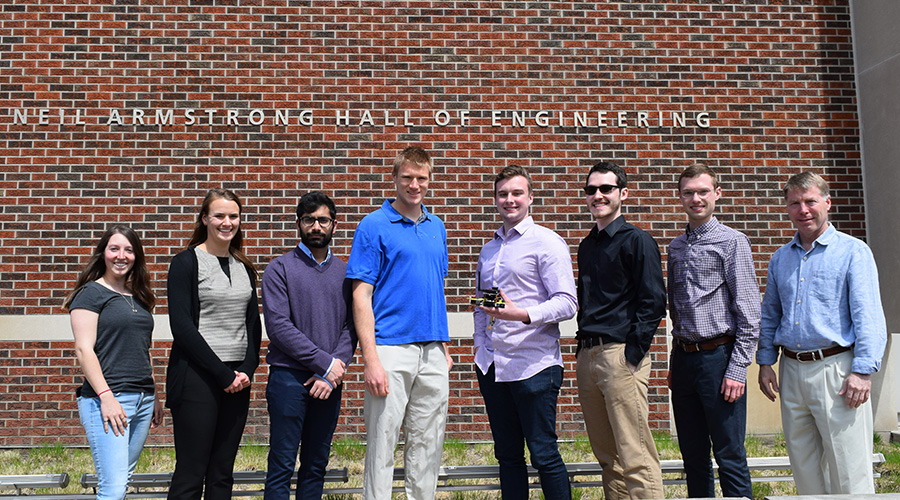AAE undergraduate student project, years in making, wins AIAA award

A team of AAE undergraduates won best paper in the team category at the AIAA Region III Student Conference April 5-7 at Cleveland State University.
The paper on the Specialized Terrestrial Rotorcraft Explorer (SPECTRE), a Mars UAV science mission concept, was co-authored by six AAE students. The students are: Tyler Hutchinson, Noah Marquand, Julia Springer, Tyler Swedes, Siddhant Tandon, and Justin Zyck. The group also gave a 20-minute presentation about the project at the AIAA conference.
The team won $500 and a trip for one of the authors to the AIAA Science and Technology Forum and Exposition in January in Orlando, Fla.
“It was a good culmination of the project,” Springer says. “I don’t want to say it made the project worthwhile because I think the project would have been worthwhile whether or not we won, but it definitely made a lot of the hard work feel more worth it.”
Especially considering the scope and history.
It started three years ago as a multidisciplinary design project. There have been three faculty advisors, David Spencer this year, and Bill Anderson and Dan Dumbacher previously. AAE graduate student Ariel Black also has been advising the team this year.
“We started out with the goal just to design something cool. It was a very broad goal,” says Swedes, who has been involved with the project since its inception. “It took us about a year to figure out we wanted to do something Mars-related and something that would incorporate space and aerodynamic-type things. So this was a logical way to do that. Starting the third semester, that’s when we really focused in on a drone that would fly in the Mars environment. Since then, we’ve been developing and fleshing out that concept.
“It started out as a very pie-in-the-sky idea. Every semester, as we’ve learned things in our aero degree, we just keep making little improvements, fixing things that didn’t make sense, and that’s how we ended up here.”
In Fall 2018, 45 undergraduates worked on the mission concept in AAE450 Spacecraft Design when the final design was “more or less wrapped up,” Swedes says. This spring, a smaller group of students has done specific tests to verify key ideas in the design. One is basically an aerodynamic test for the rotor. Another is a basic demonstration of search pattern and imaging of the Mars surface. Another is a test that demonstrates heat can be managed, both dissipated during flight and maintained during the cold Martian nights. The group also printed a 3D model of the final design as well.
The mission concept development was supported by AAE’s Industrial Advisory Council (IAC), and students have consistently given mission updates to the IAC during its on-campus meetings twice a year.
“That’s been a very crucial part of the developments we’ve made each semester,” Swedes says. “Having Professor Spencer, Professor Dumbacher, and Professor Anderson has been great, but sometimes having that outside view from somebody who is not involved in the project on a day-to-day basis has really highlighted things we’ve just missed. That’s been crucial in making little, incremental improvements every semester.”
